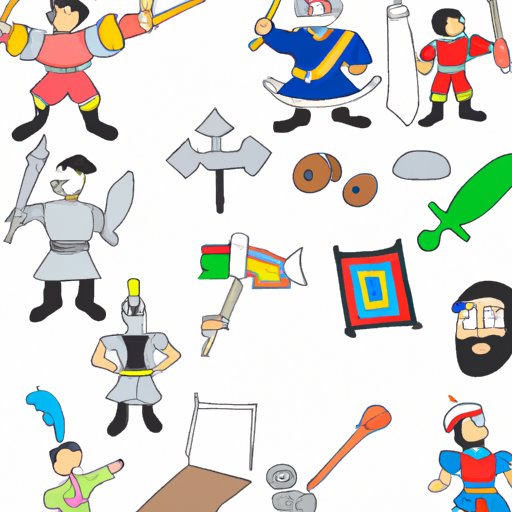Introduction
A cartoon is a form of two-dimensional illustrated visual art. The term can be used to refer to comic strips, animation, or caricatures. Cartoons have been around for centuries, but it wasn’t until the late 19th century that they began to take the form we are familiar with today. In this article, we will explore the history of cartoons and how they were invented.

A Historical Look at the Origin of Cartoons
The earliest forms of animation can be traced back to Europe and Asia in the 16th century. Most of these early animations were created by manipulating objects like puppets or paper figures. Moving pictures were also produced by “magic lanterns” which projected images onto a screen. However, these early forms of animation were limited and not widely seen.
In the late 19th century, the invention of motion pictures changed the course of animation history. This new technology allowed filmmakers to capture moving images on film and show them to audiences. Soon after, cartoon shorts began to appear in cinemas. These shorts featured simple drawings of characters and stories, usually drawn by hand.

Exploring the Development of Animation Through the Ages
As the popularity of cartoons grew, so did the techniques used to create them. In the early 20th century, animators began experimenting with hand-drawn animation techniques. This involved creating multiple drawings for each frame of the animation, which were then strung together to create the illusion of movement. This technique was used to produce some of the first successful animated films.
In the 1930s, a new technique called cel animation emerged. This involved drawing characters on transparent celluloid sheets, which were then laid over static backgrounds. This allowed animators to move the characters in each frame without having to redraw them from scratch. Cel animation was used extensively in the production of classic cartoon shorts such as those made by Walt Disney and Max Fleischer.
In the 1980s and 1990s, computer animation began to gain popularity. This allowed animators to create more sophisticated visuals and special effects. Computer animation has become the dominant technique for producing modern cartoons, though traditional methods are still used in some cases.
The Pioneers Behind the Invention of Cartoons
The invention of cartoons was a collaborative effort by many talented individuals. Among the most influential pioneers were Winsor McCay and Walt Disney. McCay was an American cartoonist who created one of the earliest animated films, Gertie the Dinosaur (1914). He is credited with developing some of the earliest cel animation techniques.
Disney is considered the father of modern animation. He created the iconic character Mickey Mouse and established the Walt Disney Company, which produced some of the most successful animated films in history. Another influential figure was Max Fleischer, creator of Betty Boop and other popular cartoon characters.
An Analysis of How Cartoons Evolved Over Time
Since the invention of cartoons, there have been significant changes in the way they are created and consumed. The genres and styles of cartoons have expanded greatly over the years, from classic black-and-white shorts to 3D computer-animated features. Production and distribution of cartoons have also increased, allowing them to reach larger audiences than ever before.
Technology has played a major role in the evolution of cartoons. Sound recording, digital animation tools, and 3D animation techniques have all contributed to the development of more sophisticated visuals and storytelling. Without these advances, cartoons would not have achieved the level of popularity they enjoy today.

Understanding the Technological Advances that Allowed for Cartoon Creation
The invention of cartoons was enabled by several key technological advances. The development of sound recording in the 1920s allowed animators to add soundtracks to their films. This allowed for a greater level of immersion and helped to draw in larger audiences.
The emergence of digital animation tools in the 1980s revolutionized the industry. These tools allowed animators to produce higher quality visuals with greater ease. More recently, 3D animation techniques have been used to create even more realistic and immersive cartoon worlds.
Understanding the Impact of Cartoons on Society and Culture
Cartoons have had a profound impact on society and culture. They are particularly popular with children, who often view them as a source of entertainment and education. Cartoons have also become an important part of popular culture, with characters and storylines being referenced in other media such as television shows and movies.
Overall, cartoons have come a long way since their invention. They have evolved along with technology and continue to influence society and culture in both positive and negative ways. As technology continues to evolve, so too will the art of animation.
Conclusion
Cartoons have been around for centuries, but it wasn’t until the late 19th century that they began to take the form we are familiar with today. The invention of cartoons was a collaborative effort by many talented individuals, and it was enabled by several key technological advances. Cartoons have had a profound impact on society and culture, and they continue to evolve alongside technology.
(Note: Is this article not meeting your expectations? Do you have knowledge or insights to share? Unlock new opportunities and expand your reach by joining our authors team. Click Registration to join us and share your expertise with our readers.)
